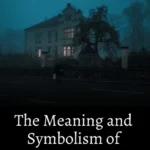Have you ever woken up from a dream and wondered what it meant? Dream analysis is an ancient practice that can provide deeper insights into our subconscious thoughts and emotions. By exploring the symbolism and meaning behind our dreams, we can uncover hidden messages and gain a better understanding of ourselves. In this article, we will delve into the world of dream interpretation and learn how to analyze our dreams step-by-step. From common dream symbols to understanding dream archetypes, we will explore various methods and techniques that will help unravel the mysteries of our dreams. So, grab your dream journal and join us on this fascinating journey into the realm of the subconscious mind.
The Importance of Dream Analysis
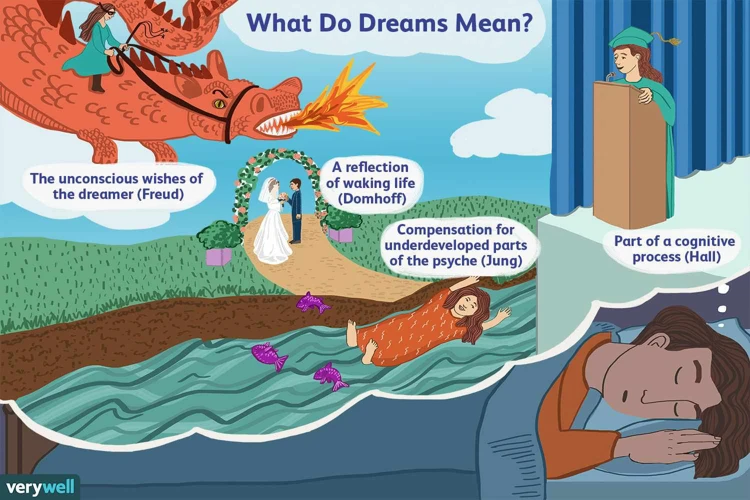
Dream analysis holds immense importance as it provides a window into our subconscious minds. Our dreams are filled with symbols and imagery that can reveal hidden emotions, desires, and fears. By analyzing our dreams, we can gain valuable insights into our thoughts and experiences, helping us navigate through life with greater self-awareness. Understanding the symbolism in our dreams can also help us uncover unresolved issues or patterns that may be impacting our waking life. Whether it’s decoding the meaning behind recurring dreams or interpreting the significance of specific symbols like snakes or rabbits, dream analysis offers a valuable tool for personal growth and self-discovery. So, let’s dive deeper into the world of dream interpretation and unlock the secrets that lie within our slumbering minds.
Common Dream Symbols

Dreams are filled with a multitude of symbols that can hold significant meaning. Understanding these common dream symbols can provide us with valuable insights into our subconscious mind. Animals are often encountered in dreams, and each creature carries its own symbolism. For example, a snake symbolizes transformation and hidden fears, while a rabbit represents luck and fertility. Water is another common symbol, representing emotions and the subconscious mind. Falling in dreams often signifies a loss of control or insecurity, while flying can indicate a sense of freedom and empowerment. Dreams involving teeth may reflect anxieties about appearance or communication. Death in dreams often signifies the end of a phase or the need for change. By analyzing these symbols and exploring their personal significance, we can gain a deeper understanding of ourselves and unravel the hidden messages our dreams are trying to convey. (To learn more about the symbolism of specific animals, you can read about the meaning of rattlesnake dreams or the symbolism of gray rabbits)
1. Animals
Animals are a common symbol in dreams and can hold significant meaning. Each animal represents different qualities and characteristics that may relate to our own personalities or situations in our lives. For example, dreaming of a snake might symbolize transformation or hidden fears, while dreaming of a rabbit could represent fertility or a need to be quick and agile. The interpretation of animal dreams is highly subjective, as personal experiences and cultural backgrounds can influence their meanings. It’s worth noting that the meaning of an animal dream can also change based on the context and emotions associated with it. To delve deeper into the symbolism of animals in dreams, you can refer to our article on /repeat-dreams/ for insights on recurring animal dreams and their significance.
2. Water
Water is a common symbol in dreams and holds various meanings depending on the context. It often represents emotions, as water can be calm and soothing or turbulent and overwhelming. Dreaming of calm, clear water may signify a sense of tranquility and emotional healing. On the other hand, dreaming of rough or murky water may indicate emotional turmoil or uncertainty. Water can also represent the subconscious mind and the depths of our emotions. Additionally, the presence of water in dreams can reflect our ability to adapt to different situations and navigate through life’s challenges. Paying attention to the specific details and emotions associated with water dreams can provide valuable insights into our emotional state and help us gain a deeper understanding of ourselves.
3. Falling
Falling is a common dream symbol that often evokes a sense of alarm or anxiety. It can represent a loss of control or a fear of failure in our waking lives. Falling dreams may also reflect a lack of stability or insecurity in certain aspects of our lives. While falling dreams can be unsettling, they can also serve as a metaphor for personal growth and the need to let go of fears and limitations. To analyze a falling dream, consider the context and emotions associated with the dream. Is there a specific situation or challenge in your life that triggers feelings of insecurity? Exploring the underlying emotions and addressing any fears or uncertainties can help bring a sense of empowerment and stability in your waking life. Remember, dreams are subjective, so the interpretation may vary from person to person. Trust your own instincts and intuition when decoding the meaning of falling in your dreams.
4. Flying
Flying is a common dream symbol that is often associated with feelings of freedom, empowerment, and adventure. When we dream of flying, it signifies a sense of liberation from the constraints of reality. Flying dreams can evoke exhilaration and a sense of being invincible, as we soar through the skies with grace and ease. This symbol may also reflect a desire for escape or a need to rise above challenges in our waking life. Additionally, flying dreams can symbolize personal growth and a newfound sense of confidence. Whether we are soaring through the clouds or gliding over vast landscapes, the act of flying in our dreams represents the boundless possibilities and limitless potential that reside within us. It is a reminder that we have the power to transcend limitations and reach new heights in our lives.
5. Teeth
Teeth are a common symbol in dreams and hold significant meaning. They often represent our ability to communicate and express ourselves effectively. Dreaming of healthy, strong teeth can indicate confidence and assertiveness, while dreams of broken or falling teeth may suggest feelings of insecurity or powerlessness. Additionally, teeth dreams can also symbolize concerns about our appearance or aging. Paying attention to the condition of the teeth in our dreams can provide insights into our self-esteem, interpersonal relationships, and overall well-being. So, the next time you dream about your teeth, take a moment to analyze the symbolism and consider what messages your subconscious mind may be trying to convey.
6. Death
Death is a powerful symbol often encountered in dreams. While many people may fear it, dreaming of death does not necessarily predict actual death or impending doom. Instead, it often represents the end of a phase or transition in life. In dream analysis, death can signify the need for change, the release of old habits or beliefs, or the culmination of a significant event. Dreams involving death may also reflect feelings of loss, grief, or the need to let go of something or someone. It is crucial to explore the emotions and context surrounding the dream to gain a more accurate understanding of its meaning. It is essential to remember that dream interpretations are highly personal, and the meaning of death in a dream can vary from person to person. (Reference: /rattlesnake-dream/)
Interpreting Dream Colors

Interpreting the colors in our dreams can provide further insights into the meaning behind our subconscious experiences. Colors hold symbolic significance and evoke specific emotions and associations. For example, the color blue may represent calmness, tranquility, or sadness, while red might symbolize passion, energy, or anger. Understanding the colors in our dreams can help us decipher the underlying emotions and themes that our subconscious mind is trying to communicate. Whether it’s analyzing the vibrant hues of a sunset or the dark shades of a stormy sky, paying attention to dream colors can add depth and richness to our dream analysis. So, let’s explore the mysterious world of dream colors and uncover the hidden messages they hold.
Dreams and Emotions

Our dreams have a profound connection to our emotions. They serve as a gateway to exploring and processing our deepest feelings and experiences. In dreams, we may encounter intense emotions such as fear, joy, sadness, or anger, often in exaggerated or symbolic form. These emotions can be a reflection of our subconscious thoughts and unresolved conflicts. By analyzing the emotions present in our dreams, we can gain valuable insights into our emotional well-being and better understand the underlying reasons behind certain feelings or behaviors. Additionally, dreams can provide a safe space for us to confront and process challenging emotions, allowing us to gain a sense of closure or resolution. So, pay close attention to the emotional landscape of your dreams as it can offer profound insights into your inner world.
Prophetic Dreams: Unveiling the Future

Prophetic dreams have long fascinated and intrigued people, as they are believed to provide glimpses into the future. These extraordinary dreams may hold important messages or warnings that can help us navigate upcoming events in our lives. Some individuals claim to have had prophetic dreams that accurately predicted major life events, such as job changes, relationships, or even natural disasters. While the accuracy of such dreams is often debated, many believe that paying attention to symbols, emotions, and details within these dreams can help unlock their prophetic nature. Whether it be through keeping a dream journal, practicing meditation, or seeking guidance from a professional dream interpreter, exploring the potential prophetic nature of our dreams can offer a unique and intriguing perspective on the possibilities that lie ahead. So, embrace the mystique of prophetic dreams and unravel the mysteries of your own future.
Sexual Dreams and Desires

Sexual dreams and desires are a natural part of human experience, and exploring their meaning can offer valuable insights into our subconscious. These dreams can range from romantic encounters to explicitly sexual scenarios, representing our hidden desires, fantasies, and emotions. It is important to approach these dreams with an open mind and without judgment. Understanding the symbolism and emotions associated with sexual dreams can help us explore our own needs, desires, and concerns in a safe and non-judgmental way. It is also crucial to recognize that sexual dreams do not always have literal interpretations and may symbolize deeper emotional connections, power dynamics, or even creativity. Keeping a dream journal, noting the details and emotions surrounding these dreams, can provide a clearer understanding of their significance. It is essential to remember that dreams are subjective, and only we can truly decipher their personal meaning. So, embrace the exploration of your sexual dreams and desires, and use them as a tool for self-discovery and personal growth.
Lucid Dreaming: Taking Control of Your Dreams

Lucid dreaming is a fascinating phenomenon that allows individuals to become aware that they are dreaming while still in the midst of the dream. It is an extraordinary experience that grants dreamers the ability to take control of their dreams and actively participate in shaping the dream narrative. Imagine being able to fly effortlessly, explore fantasy worlds, or even converse with dream characters. Lucid dreaming offers a playground for imagination and self-exploration. By practicing specific techniques, such as reality checks and dream journaling, individuals can increase their chances of having lucid dreams. Lucid dreaming has been linked to potential benefits such as problem-solving, creative inspiration, and overcoming nightmares. So, if you’ve ever wanted to take the reins of your dreams and step into a world of limitless possibilities, lucid dreaming may be your ticket to an extraordinary dream adventure.
Recurring Dreams: Unlocking Repeated Messages
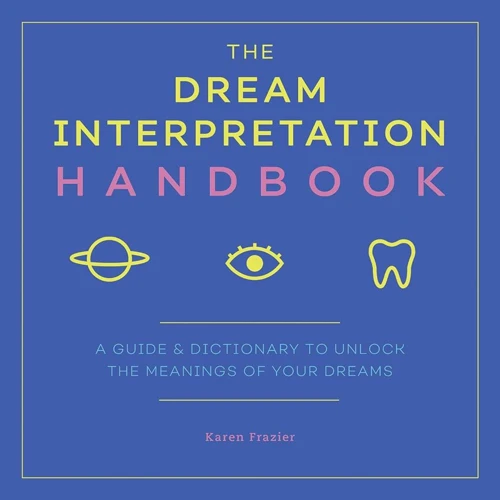
Recurring dreams are powerful messages from our subconscious that demand our attention. These are dreams that repeat themselves over time, often with similar themes or symbols. Paying close attention to recurring dreams allows us to uncover patterns and gain deeper insights into our innermost thoughts and emotions. These dreams may indicate unresolved issues, unaddressed fears, or even opportunities for personal growth. By keeping a dream journal and documenting the details of recurring dreams, we can begin to identify common elements and themes. This self-reflection and analysis will help us unlock the hidden messages that our subconscious is trying to convey. Whether it’s a recurring dream about falling or being chased, understanding and interpreting these repetitive dreams can lead to profound self-discovery and personal development. So, let’s delve further into the fascinating realm of recurring dreams and the valuable messages they hold.
Dreams and Nightmares: Taming Your Fears
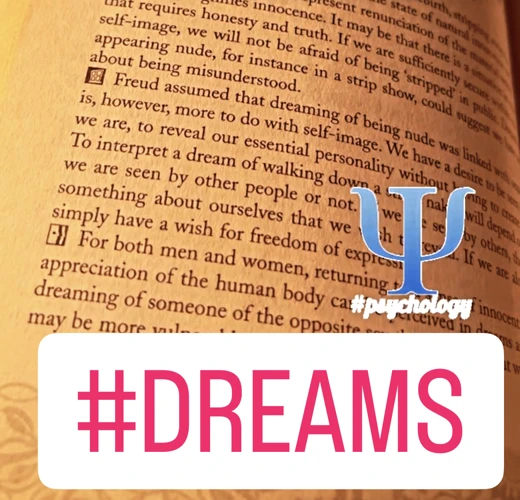
Dreams and nightmares can serve as a window into our deepest fears and anxieties. While dreams can provide valuable insights, nightmares can be particularly distressing. However, rather than being overwhelmed by fear, it is important to approach nightmares as opportunities for growth and self-reflection. By analyzing and understanding the underlying emotions and symbols within our nightmares, we can gain a sense of empowerment and learn how to confront our fears head-on. One effective technique for taming nightmares is lucid dreaming, where you become aware that you are dreaming and can take control of the dream narrative. Another approach is
Subscribe to Our Newsletter
Sign up to receive the latest news and updates.
Keeping a Dream Journal: Unraveling Patterns

Keeping a dream journal is a powerful practice that can help us unravel patterns and gain deeper insights into our dreams. By recording our dreams in a journal, we create a space to capture the details, emotions, and symbols that we encountered during our sleep. It allows us to revisit our dreams later with a fresh perspective and make connections between different dreams. A dream journal can help us identify recurring themes, symbols, or even specific people or places that frequently appear in our dreams. By recognizing these patterns, we can start to decipher the hidden messages and understand the underlying meaning behind our dreams. A dream journal also serves as a helpful tool for tracking personal growth and progress in our dream analysis journey. So, grab a notebook or start a digital journal, and begin unraveling the intricate patterns that weave through the tapestry of your dreams.
Ancient Dream Meanings from Different Cultures
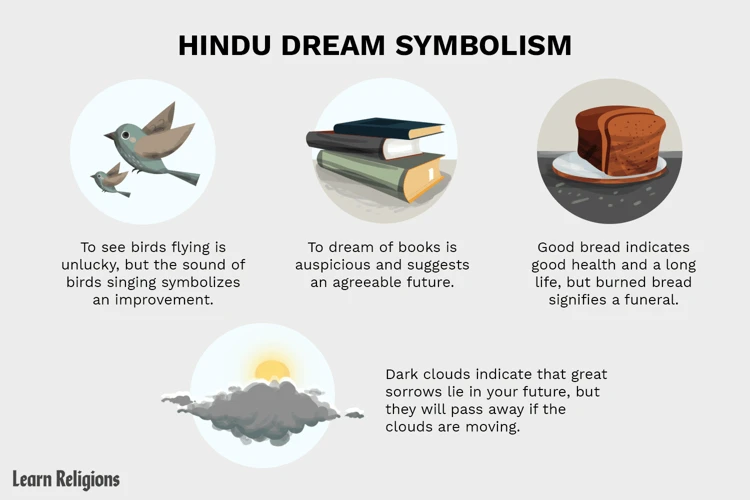
Dreams have captivated the human imagination since ancient times, and different cultures have developed their own interpretations and beliefs surrounding dream meanings. Let’s explore some fascinating examples of ancient dream interpretations from various cultures around the world:
1. Ancient Egyptians: In Egyptian culture, dreams were considered a direct communication from the gods. They believed that dreams held prophetic messages and could offer guidance regarding one’s future or events that would unfold. Dreams were often interpreted by priests or dream interpreters who were highly respected in society.
2. Native American Tribes: Native American cultures held profound reverence for dreams. They believed that dreams provided a means of communication with spirits and ancestors. Dreamcatchers were used to capture and filter out negative dreams, while positive dreams were believed to pass through and offer guidance and protection.
3. Chinese Tradition: In Chinese culture, dreams were seen as an extension of reality and an important tool for self-reflection. They believed that dreams offered insight into one’s health, luck, and future prosperity. Symbols and imagery in dreams were often connected to the teachings of Confucius and Taoism.
4. Greek Civilization: The ancient Greeks considered dreams as messages from the gods. They believed that dreams conveyed warnings, prophecies, and instructions. Greek philosophers like Aristotle and Plato explored the significance of dreams and their connection to the psyche.
5. Indigenous Australian Tribes: Dreaming is an essential concept in the spirituality of Indigenous Australian tribes. Dreamtime, or the Dreaming, represents the creation era when ancestral spirits shaped the land and established cultural traditions. Aboriginal people believe that dreams provide a connection to the Dreaming and hold deep spiritual meanings.
By studying these ancient dream interpretations, we can gain a broader perspective on the significance of dreams and the diverse ways in which cultures have sought to understand their meanings. These interpretations remind us of the universal fascination with dreams and highlight the importance of dreaming in the human experience.
Alternative Dream Interpretation Methods

When it comes to dream interpretation, there are various alternative methods that can be employed to gain a deeper understanding of our dreams. One such method is the use of dream dictionaries that provide detailed interpretations of common symbols and themes found in dreams. These dictionaries can serve as a helpful starting point for deciphering the meaning behind our dreams. Another alternative approach is the use of dream therapy, where a trained therapist guides individuals through their dreams to uncover underlying emotions and experiences. Additionally, some individuals may choose to explore dream incubation, a practice where specific dreams are intentionally cultivated by setting an intention before sleep. This method allows for a focused exploration of a particular aspect of life or personal inquiry. By utilizing these alternative dream interpretation methods, individuals can tap into different perspectives and techniques to unlock the secrets hidden within their dreams.
Understanding Dream Archetypes
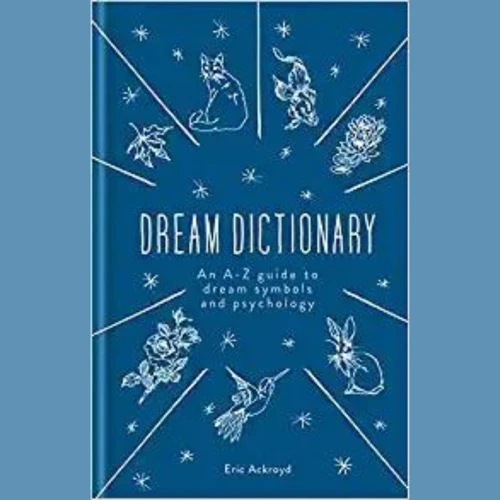
Understanding dream archetypes is crucial in unlocking the deeper meanings behind our dreams. Archetypes are universal symbols and themes that appear in myths, folklore, and dreams across cultures. These archetypal figures often represent different aspects of the human psyche and can provide profound insights into our inner world. Some common dream archetypes include the hero, the shadow, the wise old man/woman, and the trickster. The hero archetype, for example, represents our journey towards self-discovery and overcoming challenges. The shadow archetype represents our repressed or hidden desires and fears. By recognizing and analyzing these archetypal figures in our dreams, we can gain a deeper understanding of ourselves and our personal growth. So, pay attention to the characters and themes that appear in your dreams, for they hold the key to unraveling the intricate tapestry of your subconscious mind.
Common Dream Themes and Their Meanings
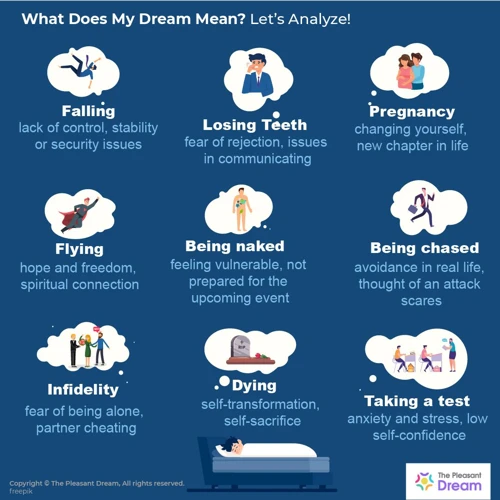
Common dream themes are often experienced by many people and hold significant meanings. Let’s explore a few of these themes and their interpretations:
1. Falling: Falling dreams are commonly associated with feelings of insecurity, loss of control, or fear of failure. It may indicate a need to reassess goals or make changes in one’s life to regain stability.
2. Flying: Dreams of flying are often linked to feelings of freedom, empowerment, or release from limitations. They can symbolize personal growth, creativity, or a desire to break free from constraints.
3. Teeth: Dreams about teeth are often related to anxieties about appearance, communication, or self-expression. They may represent concerns about how others perceive us or the need to assert oneself in difficult situations.
4. Death: Dreaming about death is not necessarily a sign of impending doom. It can symbolize the end of a phase or transformation, providing an opportunity for renewal or letting go of the past.
5. Water: Water in dreams can represent emotions, the ebb and flow of life, or our subconscious mind. Clear and calm waters may signify tranquility, while turbulent or murky waters can indicate emotional turmoil or unresolved issues.
By recognizing common dream themes and understanding their potential meanings, we can gain valuable insights into our emotions, thoughts, and experiences. However, it is important to remember that dream interpretation is highly subjective, and personal associations may differ. Explore your dreams with an open mind and explore the unique symbolism they hold for you.
Dreams and Psychological Analysis
Dreams and psychological analysis go hand in hand when it comes to understanding the human mind. Our dreams serve as a reflection of our subconscious thoughts, emotions, and desires. Through psychological analysis, we can delve deeper into the meaning behind our dreams and uncover aspects of our personality and psyche that may be hidden from our conscious awareness. Psychologists use various techniques and theories, such as Sigmund Freud’s psychoanalytic approach or Carl Jung’s concept of the collective unconscious, to interpret and analyze dreams. They look at dream symbolism, recurring themes, and the connections between the dreamer’s waking life and their dream experiences. By exploring the psychological aspects of our dreams, we can gain valuable insights into our thoughts, fears, and unresolved issues, ultimately leading to personal growth and self-discovery.
Conclusion
In conclusion, dream analysis is a powerful tool for unlocking the hidden messages and meanings behind our dreams. By exploring the symbolism, colors, and emotions within our dreams, we can gain a deeper understanding of ourselves and our subconscious mind. Whether it’s interpreting common dream symbols like animals, water, or falling, or delving into the realms of prophetic dreams or recurring messages, dream analysis allows us to tap into a world of insights and revelations. Keeping a dream journal, practicing lucid dreaming, and exploring alternative interpretation methods all contribute to unraveling the intricate web of our dreams. So, embrace the mysteries of your dreams and embark on a journey of self-discovery and personal growth through the fascinating realm of dream analysis.
Frequently Asked Questions
1. Can dreams really have meanings?
Yes, dreams can have meanings. They are the manifestation of our subconscious thoughts, emotions, and desires. Analyzing dreams can provide valuable insights into our inner world.
2. How can dream analysis benefit me?
Dream analysis can benefit you by helping you understand yourself better. It can uncover hidden fears, unresolved issues, and patterns that may be affecting your waking life. It offers a tool for personal growth and self-discovery.
3. Are there universal dream symbols?
While some symbols may have universal meanings across cultures, dream symbols can also be influenced by personal experiences and cultural backgrounds. It’s important to consider both universal and personal associations when interpreting dream symbols.
4. What if I have recurring dreams?
Recurring dreams often indicate unresolved issues or patterns in your life. Pay attention to the recurring elements and analyze their symbolism. By addressing these themes, you may find clarity and resolution.
5. Can dreams predict the future?
While there is no scientific evidence of dreams predicting the future, some individuals claim to have had prophetic dreams. However, it’s important to approach such dreams with skepticism and consider alternative explanations.
6. What are lucid dreams?
Lucid dreams are dreams in which you become aware that you are dreaming. In a lucid dream, you have the ability to control the dream narrative, interact with the dream environment, and even alter the dream’s outcome.
7. How can keeping a dream journal help?
A dream journal is a powerful tool for recording and analyzing your dreams. By jotting down details, symbols, and emotions from your dreams, you can start identifying patterns, recurring themes, and gain a deeper understanding of your dream world.
8. What are archetypes in dreams?
Archetypes are universal symbols or themes that appear in dreams across cultures. They represent fundamental human experiences such as the mother figure, the hero, or the trickster. Analyzing archetypes can provide insights into the human collective unconscious.
9. Why do dreams sometimes evoke strong emotions?
Dreams can evoke strong emotions because they tap into our subconscious mind, where powerful emotions reside. They can bring up unresolved feelings, fears, or desires that may not be consciously acknowledged in our waking life.
10. Can nightmares be helpful?
While nightmares can be distressing, they can also serve as a catalyst for personal growth and self-reflection. Nightmares often symbolize suppressed fears or anxieties, and by confronting and understanding them, we can work towards resolving these issues.









